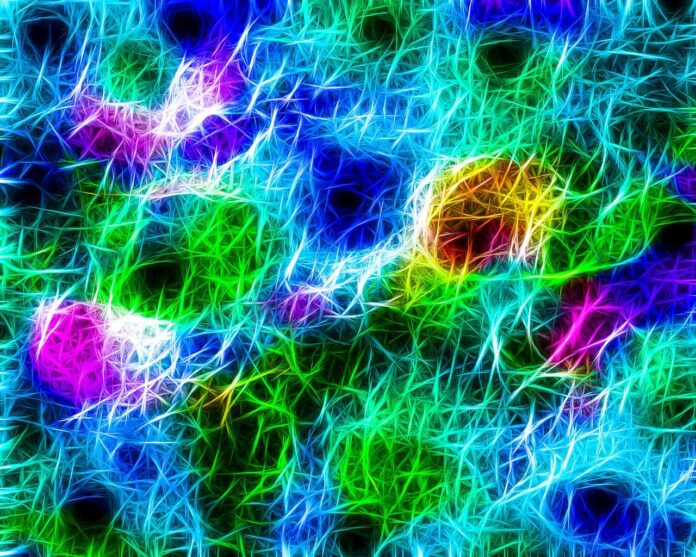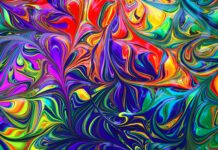Somatics, a term deeply rooted in the realms of body-mind integration and holistic wellness, encompasses a rich tapestry of practices, philosophies, and methodologies aimed at cultivating awareness, healing, and transformation through the body. At its core, Somatics explores the intricate interplay between bodily sensations, movements, emotions, and thoughts, offering a profound pathway to self-discovery and embodiment. With origins tracing back to various ancient traditions and modern pioneers in somatic education and therapy, the field of Somatics has evolved into a multifaceted discipline embraced by individuals seeking to deepen their understanding of themselves and enhance their well-being.
In the expansive landscape of Somatics, myriad approaches and modalities flourish, each offering unique insights and techniques to engage with the body’s wisdom. From somatic movement practices like Feldenkrais and Body-Mind Centering to therapeutic modalities such as Somatic Experiencing and Hakomi, the diversity within Somatics reflects its inclusive and adaptable nature. Central to these practices is the belief in the inherent intelligence of the body and its capacity for healing and self-regulation. By cultivating mindful awareness of bodily sensations, movement patterns, and emotional states, individuals can tap into this innate wisdom to facilitate growth, resilience, and embodied presence.
The essence of Somatics lies in the experiential exploration of one’s embodied existence, transcending the limitations of intellectual understanding to engage directly with the lived experience of the body. Through somatic inquiry, individuals are invited to explore the nuances of sensation, breath, posture, and gesture, unraveling the layers of conditioning and unconscious patterns that shape their physical and emotional reality. This process of somatic inquiry serves as a gateway to self-discovery, inviting individuals to listen deeply to the wisdom encoded within their bodies and to cultivate a compassionate and attuned relationship with themselves.
In the realm of somatic movement practices, the body becomes a primary vehicle for exploration and transformation, offering a rich terrain for self-exploration and expression. Modalities such as the Feldenkrais Method, developed by Moshe Feldenkrais, emphasize gentle, exploratory movements designed to enhance awareness, coordination, and flexibility. Through subtle yet profound movement explorations, practitioners learn to unravel habitual patterns of tension and discover new pathways of ease and efficiency in action. Similarly, Body-Mind Centering, founded by Bonnie Bainbridge Cohen, invites individuals to explore the anatomical, developmental, and perceptual dimensions of embodiment through guided movement explorations and hands-on facilitation. By embodying the principles of developmental movement patterns and cellular consciousness, practitioners deepen their understanding of the interconnectedness of body and mind, fostering greater integration and vitality.
In the realm of somatic therapy, practitioners draw upon a diverse array of modalities and approaches to support individuals in healing and transformation. Somatic Experiencing, developed by Peter Levine, offers a somatic approach to trauma resolution, guiding individuals through gentle, body-centered interventions to renegotiate traumatic imprints and restore a sense of safety and empowerment. Through the lens of the “felt sense,” practitioners facilitate the gradual release of somatic holding patterns and the integration of fragmented experiences, allowing for the natural resolution of trauma and the restoration of wholeness. Similarly, Hakomi Therapy, pioneered by Ron Kurtz, integrates principles of mindfulness, non-violence, and organicity to facilitate somatic awareness and emotional healing. Through gentle, experiential interventions, practitioners invite individuals to explore the core beliefs and embodied experiences that shape their sense of self, fostering greater self-awareness, compassion, and authenticity.
In addition to somatic movement practices and therapy modalities, the field of Somatics encompasses a wide range of somatic arts and disciplines, including yoga, dance, martial arts, and somatic education. These practices offer diverse pathways to embodied expression, creativity, and self-discovery, inviting individuals to explore the depths of their embodied potential and cultivate greater resilience and vitality. Whether through the fluid movements of dance, the meditative stillness of yoga, or the dynamic engagement of martial arts, somatic arts offer powerful tools for cultivating presence, mindfulness, and holistic well-being.
At its heart, Somatics embodies a profound invitation to awaken to the fullness of embodied existence, reclaiming the body as a source of wisdom, healing, and transformation. Through somatic inquiry, exploration, and practice, individuals can cultivate a deeper sense of connection with themselves, others, and the world around them, fostering greater embodiment, authenticity, and aliveness. As we journey into the depths of Somatics, we embark on a transformative odyssey of self-discovery and integration, guided by the wisdom of the body and the endless possibilities of embodied expression.
Within the expansive realm of Somatics, the exploration of embodiment extends beyond individual practices and therapeutic modalities to encompass broader philosophical frameworks and cultural paradigms. At its core, Somatics challenges prevailing Cartesian dualisms that separate mind from body, self from other, and individual from environment, offering a holistic perspective that honors the interconnectedness and interdependence of all aspects of existence. This integrative worldview invites individuals to transcend the limitations of reductionist thinking and embrace the complexity and richness of embodied experience in all its dimensions.
Central to the ethos of Somatics is the principle of embodiment, which acknowledges the inseparable unity of body, mind, and spirit within the lived experience of the individual. Embodiment encompasses not only the physical sensations and movements of the body but also the emotional, cognitive, and spiritual dimensions of human existence. Through the lens of embodiment, individuals come to recognize the body as a site of consciousness, meaning, and transformation, capable of encoding and expressing the totality of human experience. This holistic perspective invites a radical reimagining of selfhood and identity, inviting individuals to move beyond narrow conceptions of the self as separate and autonomous towards a more inclusive and interconnected sense of being-in-the-world.
At the heart of Somatics lies the practice of embodied presence, which invites individuals to cultivate mindful awareness and attunement to the present moment through the felt sense of the body. Embodied presence involves a deepening of attention and receptivity to the subtle nuances of bodily sensation, movement, and perception, allowing for a more intimate and immediate engagement with the unfolding of experience. Through practices such as mindfulness meditation, body scanning, and somatic movement, individuals learn to anchor themselves in the present moment, cultivating a sense of groundedness and spaciousness that transcends the incessant chatter of the thinking mind. In the stillness of embodied presence, individuals discover a profound sense of aliveness and vitality, reconnecting with the inherent wisdom and intelligence of the body as a guide and ally on the journey of self-discovery and transformation.
In the context of Somatics, the body serves as a primary gateway to the unconscious realms of psyche and spirit, offering a direct pathway for accessing and integrating repressed emotions, traumas, and ancestral imprints. Through somatic practices such as body-oriented psychotherapy, somatic trauma resolution, and expressive arts therapy, individuals can engage in a process of deep inner exploration and healing, facilitating the release of stored tension and the integration of fragmented aspects of self. By attending to the body’s language of sensation, gesture, and expression, individuals can bypass the defenses of the ego and access the deeper layers of the psyche, uncovering hidden wounds and unmet needs that are seeking acknowledgment and resolution. In this way, Somatics offers a holistic approach to psycho-spiritual integration, bridging the realms of body and soul and fostering a deeper sense of wholeness and authenticity.
The practice of Somatics also holds profound implications for our relationship with the natural world and the larger web of life in which we are embedded. By attuning ourselves to the rhythms and cycles of the body, we come to recognize our kinship with the earth and all its inhabitants, acknowledging our shared vulnerability and interdependence. Through practices such as eco-somatics and somatic ecology, individuals can cultivate a deeper sense of connection and reciprocity with the more-than-human world, fostering a sense of stewardship and reverence for the earth and its ecosystems. As we learn to listen to the wisdom of the body and the natural world, we discover that our well-being is intimately interconnected with the well-being of the planet, inviting us to cultivate a more sustainable and regenerative way of living in harmony with the earth.
In conclusion, Somatics offers a profound invitation to reclaim the body as a source of wisdom, healing, and transformation in our lives. By engaging in somatic inquiry, exploration, and practice, we can cultivate a deeper sense of embodiment, presence, and authenticity, fostering greater integration and wholeness in our relationships with ourselves, others, and the world around us. As we awaken to the embodied reality of our existence, we discover that the body is not merely a vessel for the mind or a vehicle for action but a sacred temple of consciousness and a gateway to the depths of our soul. In the journey of Somatics, we embark on a path of self-discovery and self-transcendence, guided by the wisdom of the body and the infinite possibilities of embodied expression.


















